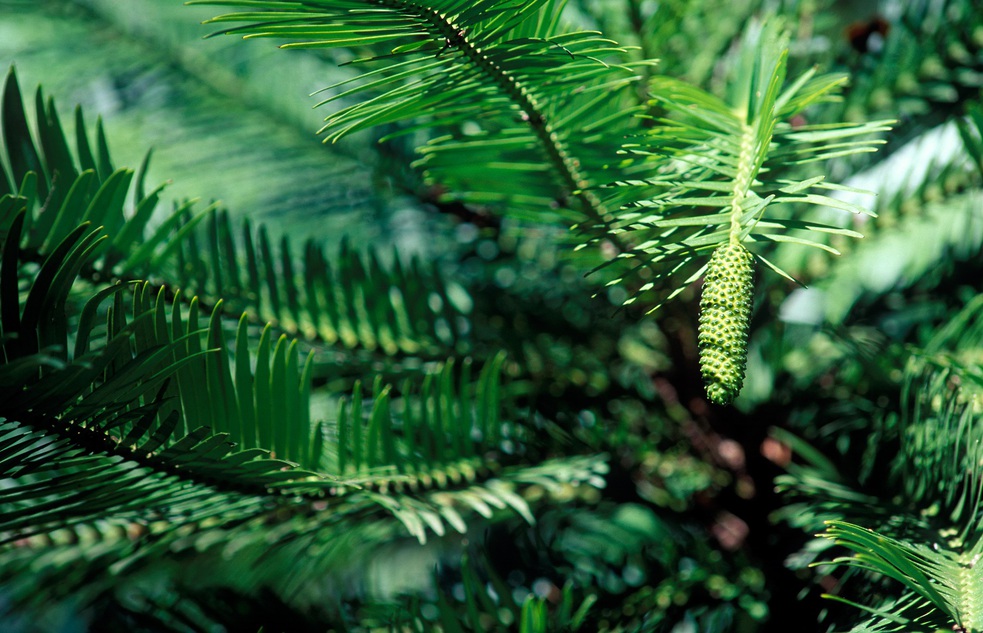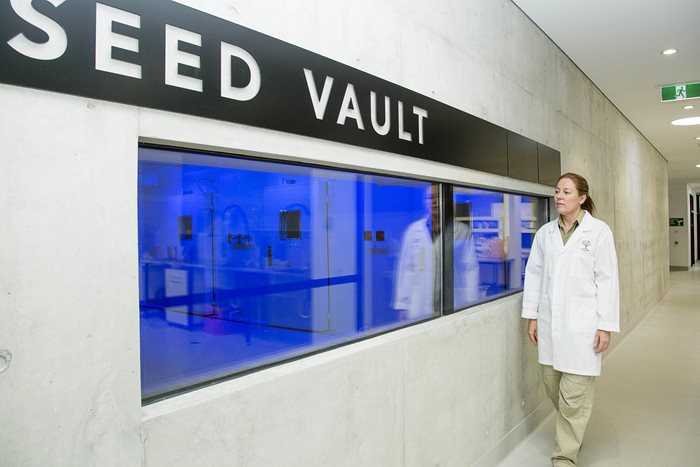The Australian Institute of Botanical Science
The new Australian Institute of Botanical Science will advance fundamental knowledge of flora and drive effective conservation solutions to ensure the survival of plants, and all life that depends on them.

What is the Australian Institute of Botanical Science?
The Australian Institute of Botanical Science consists of the physical and virtual scientific collections, research, services and facilities, and of course, our staff at the Royal Botanic Garden Sydney, Australian Botanic Garden Mount Annan and the Blue Mountains Botanic Garden Mount Tomah. The new Institute will be one of the nation’s premier botanical research organisations and will help ensure the survival of plants and build more resilient ecosystems for future generations. You can learn more about the components that make up the new Institute further below.

Our people
Staff at the Australian Institute of Botanical Science are building on over 200 years of advancing fundamental knowledge of plants. They bring exemplary expertise, knowledge and passion to our mission, and work with industry and governments, and collaborate with a national and global network to produce world class research. They are highly trained and are internationally renowned for their expertise in their chosen disciplines and are our greatest resource.
National Herbarium of NSW
The Herbarium is one of the most significant botanical resources in the Southern Hemisphere, housing more than 1.4 million plant specimens. Scientists regularly discover, document and classify plants and algae, and seek to understand their relationships and evolution.
We explore ecosystems to document what is there and discover new species, and there are still many to be found. Every year, more than 8,000 botanical specimens are added to the Herbarium collection, which is essential for informing and making decisions about the conservation and management of our natural environment.
Construction of a new state-of-the-art National Herbarium of NSW is underway at the Australian Botanic Garden Mount Annan. The new purpose built facility will protect the growing collection and will join the award-winning Australian PlantBank to ensure the survival of plants for generations to come.
A significant first step to move the Herbarium collection is digitisating the collection with Picturae capturing the specimens as a high-resolution digital images as part of our Digitisation project. By the time the collection is moved to the new Herbarium at the Australian Botanic Garden Mount Annan in 2021, the collection will be fully accessible online.

Banksia Herbarium specimen collected by Banks & Solander in 1770.

Botanical specimens being digitised by Picturae.
Australian PlantBank
Located at the Australian Botanic Garden Mount Annan, the Australian PlantBank is the award-winning home of plant conservation research, germplasm collection and storage in New South Wales. Its seed and tissue culture collections provide an insurance policy against extinction of native plants in the wild.
Approximately half of the almost 5000 species of plants found in New South Wales alone are stored in PlantBank’s seed vault, and about 67 per cent of threatened species from across the state have been carefully collected and are stored here.
Over 100,000,000 seeds are stored inside the seed vault at the Australian PlantBank

Over 100,000,000 seeds are stored inside the seed vault at the Australian PlantBank

Species with seeds that do not tolerate any drying can be conserved by tissue culture
Research Centre for Ecosystem Resilience
Based at the Royal Botanic Garden Sydney, the new Research Centre for Ecosystem Resilience (ReCER) will provide evidence-based information for restoring, repairing and protecting native ecosystems confronted by climate change, degradation and invasive pathogens. It will include the flagship Restore & Renew project, with programs on the genetics of threatened species, as well as diseases affecting plants in gardens, parks and our natural environments, which will provide information to help habitats.
Living Collections
The Living Collections at the Royal Botanic Garden Sydney, the Blue Mountains Botanic Garden Mount Tomah and the Australian Botanic Garden Mount Annan each contain a scientific resource of wild-sourced living plant material of known provenance for use in a range of scientific endeavours.
The Gardens’ nurseries and propagation facilities are critical in the production of plants for use in supplementing at-risk plant populations in the wild. It is likely that these living collections contain plants that could be used to develop bush foods, new plants for horticulture and new medicines. The Gardens will be working with partners to explore this potential in the future.

Daniel Solander Library
Established in 1852, the Daniel Solander Library, located in the Royal Botanic Garden Sydney, is the oldest botanical research library in Australia. Its world-class collections contain more than 250,000 items, including materials as diverse as books, journals, maps, manuscripts, historic photographs, botanical illustrations, archives, archaeological artefacts and memorabilia, covering the areas of science, history and culture.
Centre for Education and Engagement
The Gardens’ scientific programs support education and outreach for the whole community, especially those targeted at STEM (science, technology, engineering and maths) programs for school-aged children.
Through curriculum aligned and formal and informal programs, the Centre for Education and Engagement provides transformative learning experiences, which help to grow people’s connections, curiosity and understanding of nature, STEM, culture and community. The Centre connects higher education programs, science communication and outreach, to highlight the importance of plants in our lives.

Sustaining life
The Institute's research programs are focused on themes that centre around the importance of plants in our lives, and the need to conserve and protect them for everyone’s benefit. They focus on the need to provide a knowledge hub for Australian and New South Wales flora, documenting and describing new plants across the environment, conserving and protecting threatened species, and supporting and establishing resilient ecosystems, whether they be in the bush or in urban environments. The new Australian Institute of Botanical Science will serve this purpose. Plants are central to the existence of all life on our planet, and they are under threat now in a way that has never before been experienced. It is imperative, now more than ever, for the Australian Institute of Botanical Science to be established, and there is so much work to be done.
We must amplify our activities to ensure the survival of all plants.
DR BRETT SUMMERELL, CHIEF BOTANIST
Bushfire recovery
The past six months or so have had a huge impact on the natural world, especially plants. Bushfires across millions of hectares of bushland have seen billions of trees, shrubs and other plant life go up in flames. Some plants will survive, some will be lost, and some will thrive in response to the fire.
Species respond in different ways, requiring different levels of support to ensure their survival. Make no mistake, these fires that followed one of the worst droughts this country has experienced, have been exacerbated by climate change. These catastrophic events will become more frequent and intense, based on the consensus of scientific projections from research groups worldwide. Given that, we need to be pre-emptive and ready to ensure the survival of Australia’s unique plant life.
This scenario, coupled with the opportunities provided by the new National Herbarium of NSW being constructed at the Australian Botanic Garden Mount Annan, highlight the national and international importance of the Botanic Gardens’ science and education programs through the establishment of the new Australian Institute of Botanical Science.
After the bushfires: Understanding the resilience of our natural environment
If you are a journalist and have a media enquiry about this story, please click here for contact details and more information.